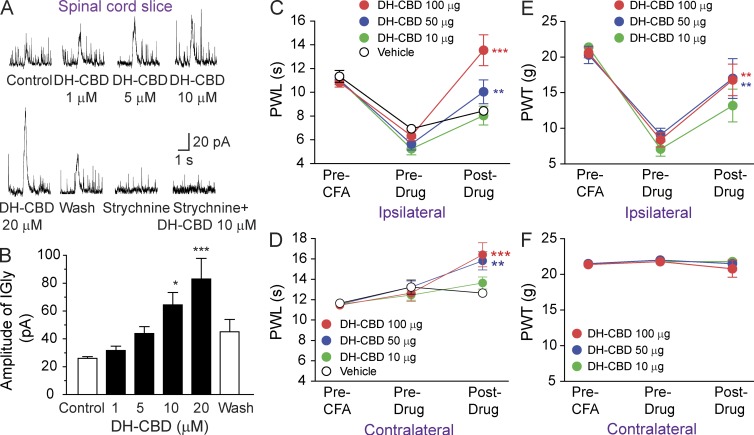Figure 2.
DH-CBD potentiation of IGly in spinal neurons and suppression of inflammatory pain in rats. (A) Original recordings showing currents activated by puff application of 30 µM glycine to lamina II neurons with and without sustained DH-CBD application in rat spinal cord slices. 1 µM strychnine, a specific GlyR antagonist, was used to determine whether GlyRs are the target that mediates the DH-CBD–induced potentiation. (B) Bar graphs of DH-CBD–induced potentiation on IGly of spinal lamina II neurons (n = 7). (C and D) Effect of i.t. application of DH-CBD or vehicle on the ipsilateral (C) and contralateral (D) PWL to noxious heat stimulation in rats before and after intraplantar CFA injection (n = 6–7). (E and F) As in C and D, but rats were subjected to punctuate mechanical stimuli (n = 8). Data are representative of three (A and B) and two (C–F) independent experiments (*, P < 0.05; **, P < 0.01; ***, P < 0.001, post-drug vs. pre-drug) and expressed as mean ± SEM.

